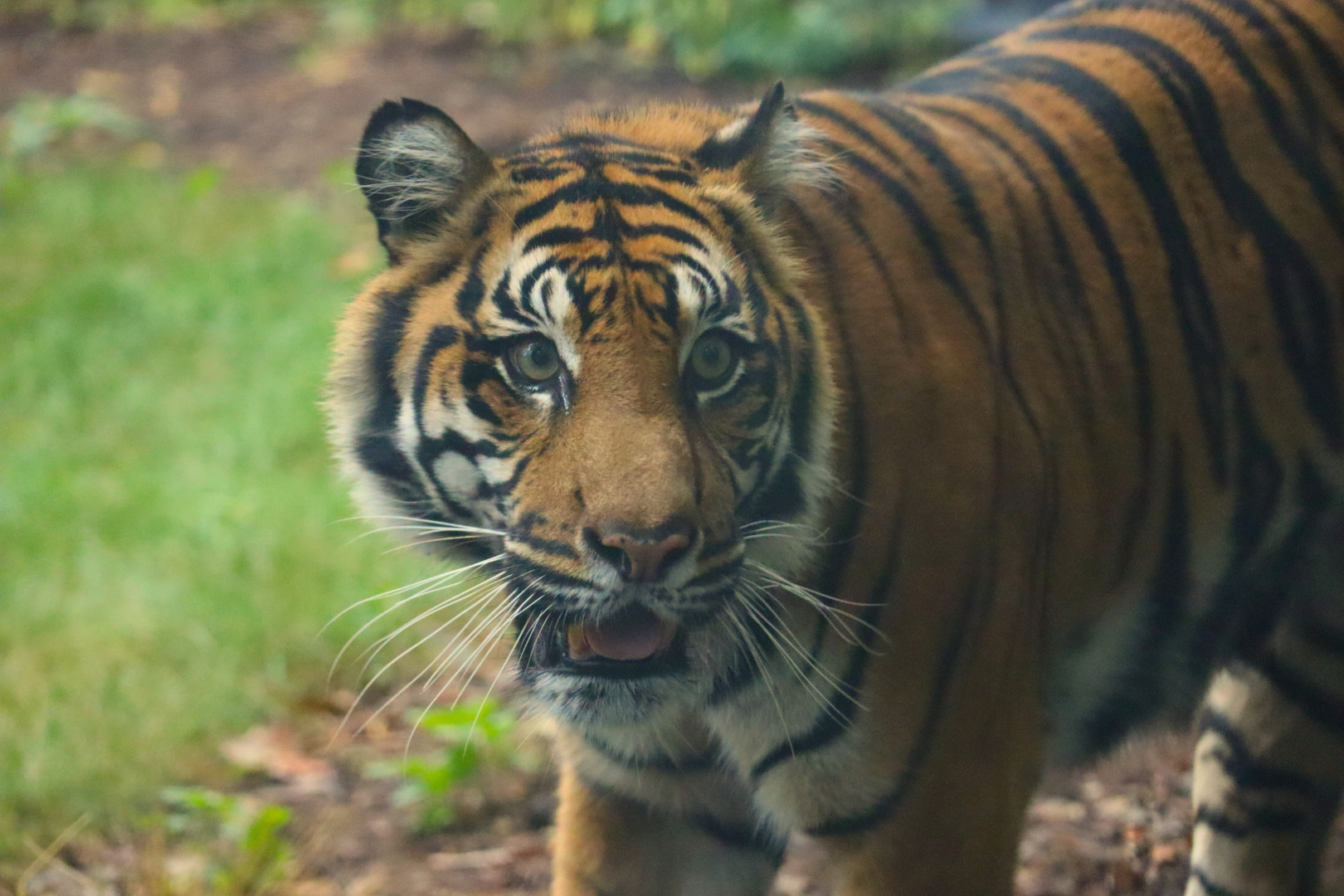I LIVE IN ASIA
Sumatran tigers are native to the tropical rainforests and grasslands of Sumatra in Indonesia. Fewer than 400 Sumatran tigers remain in the wild.
I AM A CARNIVORE
A Sumatran tiger will prey upon just about any animal they come upon, regardless of size. This could include monkeys, fish, and deer.
SUMATRAN TIGERS ARE SOLITARY
Sumatran tigers are solitary animals, they live and hunt alone. A female Sumatran tiger will stay with her young until they are old enough to survive independently.
CALM, COOL, AND CAMOUFLAGED
Sumatran tigers have the thinnest stripe pattern of all tiger subspecies. These narrow stripes aid the tiger in camouflaging amongst the rainforest flora.
HELPING THE SUMATRAN TIGER IN THE WILD
The Fort Wayne Children’s Zoo supports the Wildcats Conservation Alliance, a conservation organization that funds tiger conservation projects.
I AM IMPORTANT TO MY ECOSYSTEM
Because they are a top predator in their ecosystem, Sumatran tigers play an important role in regulating other animal populations. This helps maintain a balance between the herbivores tigers prey upon and the vegetation upon which herbivores eat.

